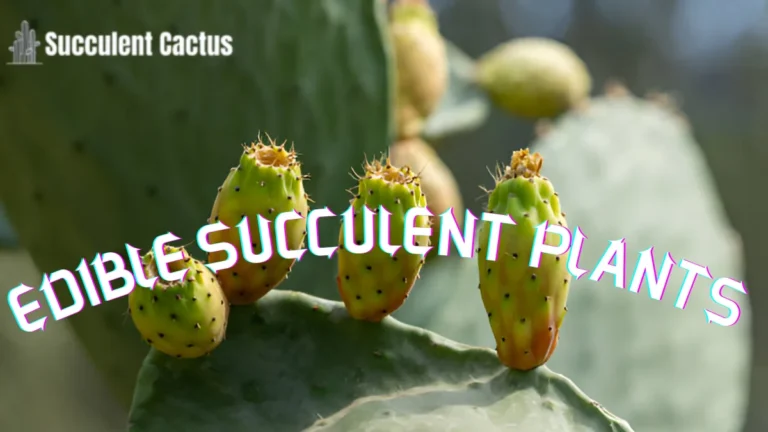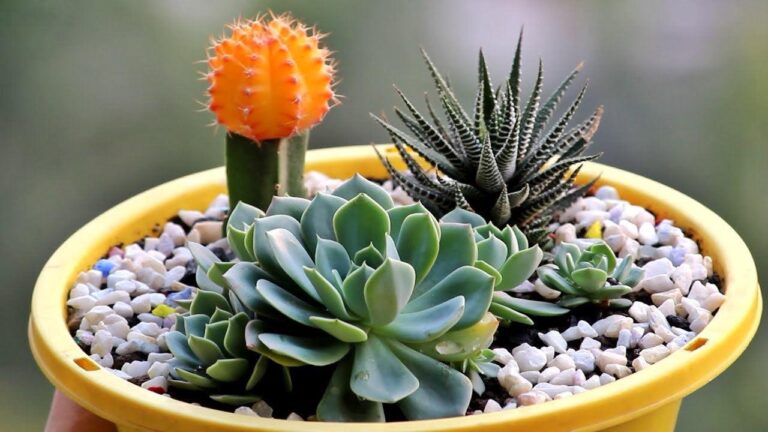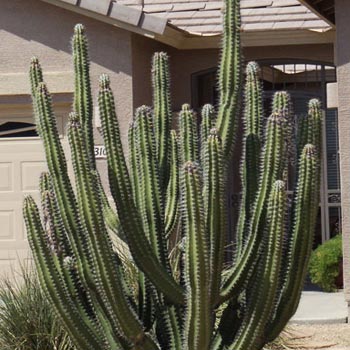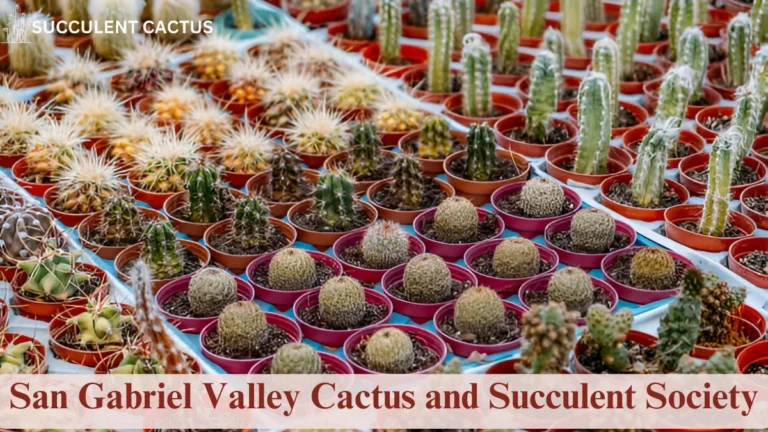Succulent Plant Turning Brown: Causes, Prevention, and Remedies

Succulents are known for their resilience, but they can develop issues like browning leaves, which indicate underlying problems. Whether it’s overwatering, pests, or sun damage, understanding why your succulent plant is turning brown can help you restore its health. This guide explores the causes, preventive measures, and effective solutions.
Understanding why a Succulent Plant Turning Brown
Overwatering and Root Rot
Overwatering is a common cause of a Succulent Plant Turning Brown. Since succulents store water in their leaves and stems, excess moisture can lead to root rot. Signs of overwatering include:
- Soft, mushy leaves
- Brown or blackened roots
- A foul smell coming from the soil
How to Fix Overwatered Succulents:
- Stop watering immediately and let the soil dry out.
- Remove the plant from the soil, check for root rot, and trim affected roots.
- Repot in dry, well-draining soil like a cactus mix.
- Water only when the soil is completely dry to prevent future issues.
Underwatering and Dried Leaves
Underwatering can also cause brown leaves, but they appear dry, crispy, and shriveled rather than mushy. Succulents need periodic watering, even though they are drought-tolerant.
Signs of Underwatering:
- Wrinkled leaves with brown edges
- Brittle, dry texture
- Leaves falling off easily
How to Revive an Underwatered Succulent
- Soak the soil until water drains out, then let it dry before the next watering.
- Use a watering schedule based on the climate (more in summer, less in winter).
- Increase humidity by placing a water tray near the plant.
Sunburn and Heat Stress
Succulents thrive in bright light, but excessive exposure can lead to sunburn, causing leaves to turn brown or reddish.
Signs of Sunburn in Succulents:
- Brown, scorched patches on leaves
- Leaves feel dry and brittle
- Growth slows or stops completely
Prevention and Treatment:
- Move the plant to indirect sunlight or partial shade.
- Introduce it to direct sunlight gradually.
- Use a sheer curtain or shade cloth to filter intense light.
Soil and Watering Mistakes That Cause a Succulent Plant Turning Brown
Using the Wrong Soil Mix
Poor soil leads to improper drainage, increasing the risk of browning from root rot.
Best Soil Mix for Succulents:
| Soil Type | Drainage | Nutrient Content |
| Cactus Mix | Excellent | Moderate |
| Sandy Loam | Good | High |
| Clay Soil | Poor | High |
Hard Water Damage
Hard water contains minerals like calcium and magnesium, which leave residue on succulent leaves and soil, leading to discoloration.
How to Fix Hard Water Issues:
- Use filtered or distilled water for watering.
- Flush the soil monthly with rainwater.
- Wipe leaves gently with diluted vinegar solution to remove mineral buildup.
Over-Fertilization
Using too much fertilizer can burn the roots, causing leaf tips to turn brown.
How to Avoid Fertilizer Burn:
- Use a diluted succulent fertilizer (1/4 strength).
- Apply fertilizer only during the growing season (spring/summer).
- Avoid fertilizing newly repotted plants.
Pests and Diseases Leading to a Succulent Plant Turning Brown
Mealybugs and Scale Insects
Mealybugs and scale insects suck plant sap, causing browning, wilting, and weak growth.
How to Get Rid of Pests:
- Use rubbing alcohol on a cotton swab to remove pests.
- Apply neem oil spray as a natural repellent.
- Isolate infected plants to prevent spreading.
Fungal and Bacterial Infections
Fungal infections like powdery mildew and bacterial rot cause dark brown spots on succulent leaves.
Treatment for Fungal and Bacterial Diseases
- Remove infected leaves immediately.
- Apply a fungicide or diluted hydrogen peroxide spray.
- Improve air circulation around the plant.
Mites and Other Infestations
Spider mites leave tiny brown dots and webbing on succulents.
Prevention & Control
- Spray plants with insecticidal soap.
- Keep humidity low to discourage mites.
- Introduce natural predators like ladybugs.
How to Revive a Brown Succulent
Leaf Propagation for Recovery
If the main stem is damaged, propagating healthy leaves can save the plant.
Steps to Propagate a Succulent
- Gently remove a healthy leaf from the base.
- Let it dry for 2-3 days to form a callus.
- Place on dry soil and mist occasionally.
- Wait for new roots and transplant once established.
Repotting for Recovery
Repotting can help refresh the soil and remove infections.
How to Repot a Browning Succulent
- Choose a new pot with drainage holes.
- Use fresh cactus or succulent soil.
- Water lightly after a few days.
Trimming Damaged Parts
Removing dead leaves allows the plant to focus energy on healthy growth.
Pruning Tips
- Use sterile scissors to cut brown areas.
- Avoid over-trimming; remove only severely damaged parts.
- Let the wounds dry before watering.
The Impact of Environmental Factors on Succulent Health
Temperature Fluctuations and Browning
Extreme temperature shifts stress succulents, causing leaves to turn brown or drop.
Temperature Ranges for Healthy Succulents
| Season | Ideal Temperature Range |
| Spring/Summer | 60-80°F (15-27°C) |
| Fall/Winter | 50-60°F (10-15°C) |
To protect succulents from sudden temperature drops:
- Move them indoors during extreme cold.
- Avoid placing them near air conditioners or heaters.
- Use frost cloth for outdoor succulents in winter.
Humidity and Air Circulation
Poor air circulation and high humidity can lead to fungal growth, causing brown spots.
To maintain healthy humidity levels:
- Place succulents in well-ventilated areas.
- Avoid misting leaves in humid conditions.
- Use a small fan indoors to improve airflow.
Pollution and Air Quality
Dust and pollutants settle on succulent leaves, reducing their ability to absorb sunlight.
To keep succulents clean:
- Wipe leaves gently with a damp cloth every few weeks.
- Avoid exposure to cigarette smoke or industrial pollutants.
The Role of Pot Size and Drainage in Preventing Browning
Choosing the Right Pot for Succulents
A pot that’s too large holds excess moisture, increasing the risk of root rot.
Pot Size Guide for Succulents
| Plant Size | Recommended Pot Diameter |
| Small (2-4 in.) | 3-4 inches |
| Medium (4-6 in.) | 5-6 inches |
| Large (6+ in.) | 7-8 inches |
Ensuring Proper Drainage
Good drainage prevents root rot and keeps soil from becoming soggy.
Tips for better drainage:
- Use pots with drainage holes.
- Place gravel or mesh at the bottom to improve airflow.
- Avoid using regular garden soil.
When to Repot a Browning Succulent
Repotting is essential when a succulent outgrows its container or develops root rot.
Signs your succulent needs repotting:
- Roots grow out of drainage holes.
- Soil remains wet for too long.
- Leaves turn brown and mushy.
Nutrient Deficiencies and Their Effects on Succulent Color
Signs of Nutrient Deficiencies
Succulents require nutrients like nitrogen, phosphorus, and potassium. A deficiency can lead to discoloration.
| Nutrient | Deficiency Symptoms |
| Nitrogen (N) | Yellowing leaves, slow growth |
| Phosphorus (P) | Brown leaf tips, weak roots |
| Potassium (K) | Browning edges, leaf curling |
How to Fix Nutrient Deficiencies
- Use a balanced fertilizer (e.g., 10-10-10 NPK).
- Apply fertilizer once a month during the growing season.
- Avoid excessive fertilization, which can burn roots.
Organic vs. Chemical Fertilizers
Organic fertilizers release nutrients slowly, while chemical fertilizers provide an instant boost.
For long-term health, opt for:
- Compost tea or worm castings.
- Slow-release fertilizers (applied sparingly).
Browning Due to Physical Damage or Stress
Succulents may turn brown due to handling mistakes, transportation issues, or pet damage. These stresses affect the plant’s ability to heal, making it more vulnerable to disease.
Handling and Transport Shock
Succulents are delicate, and improper handling can bruise their leaves. If you’ve recently moved your plant and notice brown marks, it could be due to transport stress.
How to Avoid Handling Stress:
- Always hold succulents by the base, not the leaves.
- If transporting, wrap them in soft padding like tissue or cloth.
- Avoid shaking the plant—sudden movements can damage roots.
If a succulent is suffering from transport stress:
- Let it rest in indirect light for a few days before watering.
- Check for root damage—repot if necessary.
Pet and Pest Damage
Pets sometimes chew on succulents, causing browning at the edges. Similarly, slugs, snails, and other insects may nibble on the plant, leaving brown bite marks.
To protect your succulents from pets:
- Keep them on high shelves or hanging planters.
- Use pet-safe deterrents like citrus peels near the plant.
For pest infestations:
- Check for bite marks or slime trails (signs of slugs/snails).
- Use crushed eggshells or diatomaceous earth to keep pests away.
Effects of Pruning and Cutting
Improper pruning can cause browning if the plant cannot heal correctly.
Best Pruning Practices:
✅ Use sharp, sterilized scissors to prevent infection.
✅ Cut above a healthy leaf node to encourage regrowth.
✅ Let the cut callous over for 2-3 days before watering.
Common Mistakes People Make With Succulents
Many beginner succulent owners make mistakes that lead to browning, root rot, and stunted growth.
Placing Succulents in the Wrong Light Conditions
Succulents require bright indirect sunlight to thrive. If placed in low light, they may turn brown due to stretching and stress.
Ideal Light Conditions for Succulents
| Succulent Type | Recommended Light | Common Issues If Improperly Lit |
| Echeveria | Full sun | Stretching, weak stems |
| Haworthia | Bright indirect light | Browning, slow growth |
| Aloe Vera | Partial to full sun | Sunburn in harsh light |
Ignoring Soil Quality
Using the wrong soil mix is one of the biggest mistakes. Regular garden soil holds too much moisture, leading to root rot and browning.
✅ Use a well-draining succulent mix.
✅ Add perlite or sand to improve aeration.
Overcrowding Succulents in Arrangements
While succulent arrangements look beautiful, overcrowding causes:
- Lack of airflow, leading to fungal infections.
- Nutrient competition, causing browning leaves.
Solution:
✅ Space succulents at least 2 inches apart.
✅ Repot overcrowded plants to prevent root entanglement.
Seasonal Care for Preventing Browning
Each season brings different challenges for succulents. Proper seasonal care can prevent browning and ensure healthy growth.
Summer Care Tips
During summer, heat stress and overwatering are common issues.
✅ Water early in the morning or late in the evening.
✅ Keep outdoor succulents in partial shade during extreme heat.
✅ Mist lightly in dry climates but avoid soaking the leaves.
Winter Care Tips
Cold weather can cause succulents to freeze and turn brown.
✅ Move plants indoors if temperatures drop below 50°F (10°C).
✅ Avoid watering more than once a month during dormancy.
✅ Use grow lights if natural light is insufficient.
Spring and Fall Adjustments
Spring and fall are the best seasons for repotting and propagation.
✅ Check for root rot after winter.
✅ Trim any brown leaves to promote new growth.
✅ Start light fertilization to encourage fresh leaves.
Propagation Techniques to Save a Dying Succulent
If your succulent is severely browning, propagation may be the best way to save it.
Leaf Cuttings
If the main plant is too damaged, you can propagate new plants from leaves.
1️⃣ Gently twist off a healthy leaf from the base.
2️⃣ Let it dry for 2-3 days until the wound callouses.
3️⃣ Place the leaf on dry soil (don’t bury it).
4️⃣ Mist lightly every few days until roots develop.
Stem Cuttings
For succulents with woody stems, stem cuttings work better.
- Cut a 3-4 inch section from the stem.
- Let the cut dry for a few days before planting.
- Place in well-draining soil and water sparingly.
Offsets and Pups
Many succulents produce baby plants (offsets) that can be separated and replanted.
- Gently pull the offset from the mother plant.
- Let it dry before placing it in soil.
- Water lightly once a week.
Case Studies: Reviving Browning Succulents
Real-life examples show how succulents can recover from browning, sunburn, and rot.
Saving a Sunburned Succulent
- Plant: Aloe Vera
- Problem: Brown, crispy leaves from direct summer sun.
- Solution:
✅ Moved to bright indirect light.
✅ Watered once a week to prevent dehydration.
✅ Trimmed burnt leaves to encourage new growth. - Result: Recovered in 4 weeks with healthy green leaves.
Overwatered Echeveria Recovery
- Plant: Echeveria
- Problem: Leaves turned brown and mushy due to overwatering.
- Solution:
✅ Removed all rotten roots.
✅ Repotted into dry succulent soil mix.
✅ Let the plant rest for a week before watering again. - Result: New growth appeared in 3 weeks.
Reviving a Pest-Infested Jade Plant
- Plant: Jade Plant
- Problem: Mealybugs caused brown spots on leaves.
- Solution:
✅ Sprayed leaves with 70% isopropyl alcohol.
✅ Applied neem oil weekly.
✅ Moved the plant to an area with better airflow. - Result: Fully recovered in 2 months.
Frequently Asked Questions (FAQs)
1. Why is my succulent plant turning brown and mushy? It’s likely due to overwatering or root rot. Let the plant dry and check for rot in the roots.
2. Can I save a sunburned succulent? Yes, move it to indirect sunlight and trim off severely burned leaves.
3. Should I remove brown leaves from my succulent? Yes, if they are crispy, mushy, or dead, removing them prevents infection.
4. How can I prevent my succulent from turning brown? Ensure proper watering, well-draining soil, and balanced sunlight.
5. How do I know if my succulent needs more water? If leaves are shriveled, dry, and brittle, it may need a deep watering.
Conclusion
A succulent turning brown is usually a sign of overwatering, sunburn, pests, or poor soil. By identifying the cause early and taking corrective measures—like improving drainage, adjusting watering, and removing pests—you can restore your succulent’s health and prevent future problems.
With proper care, succulents can thrive for years and bring beauty to any space. 🌱





